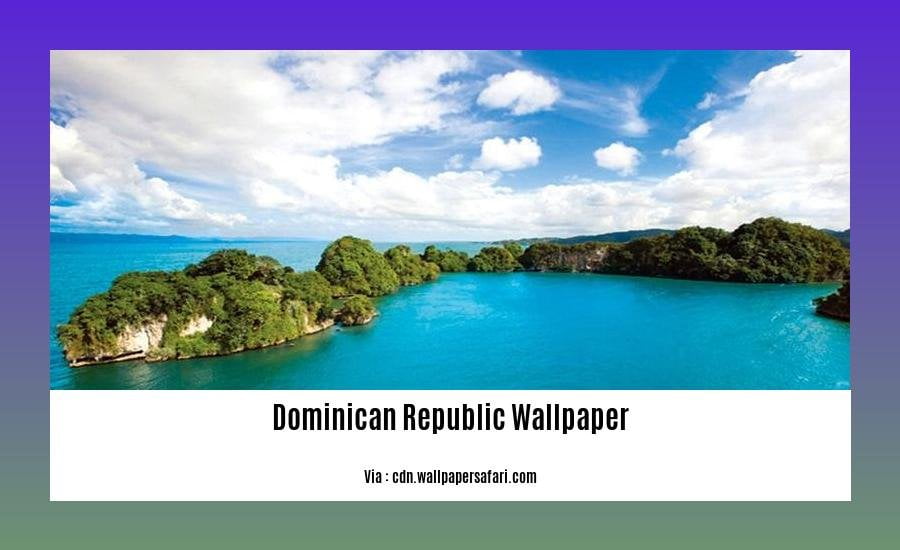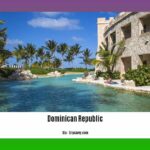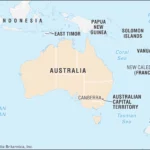Prepare to be captivated as we embark on a journey to uncover the hidden treasures of the Dominican Republic. Join us as we delve into 10 intriguing facts about this Caribbean gem. From its rich history and diverse landscapes to its vibrant traditions, the Dominican Republic beckons travelers with an allure that’s second to none. Get ready to immerse yourself in the heart and soul of this captivating land.
Key Takeaways:
The Dominican Republic is a Caribbean nation sharing an island with Haiti.
Santo Domingo serves as the country’s capital.
The original name given by Christopher Columbus was “La Española,” meaning “Spanish Island.”
Spanish is the official language of the Dominican Republic.
Baseball reigns as the most popular sport and has produced renowned players like Sammy Sosa and David Ortiz.
Vibrant Carnival celebrations take place in February, filled with colorful costumes, parades, and music.
The Dominican Republic ranks among the top 10 global producers of high-quality cocoa.
El Limón Waterfall captivates visitors with its breathtaking beauty and refreshing waters.
Interesting Facts About the Dominican Republic
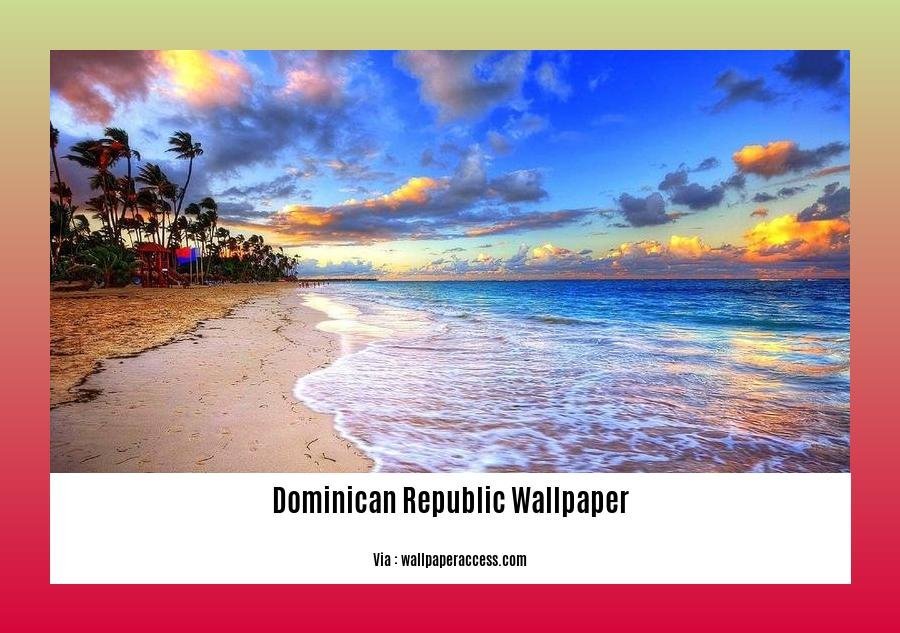
Hello travel enthusiasts! Welcome to my corner of the internet, where I unveil some intriguing interesting facts about Dominican Republic, a Caribbean gem that’s sure to capture your wanderlust. As a seasoned traveler who’s roamed the island’s vibrant streets and lush landscapes, let me take you on a journey into the heart of this captivating nation.
1. Baseball’s Reign: A Dominican Passion
In the Dominican Republic, baseball is more than just a sport—it’s a national obsession! The country proudly ranks among the world’s top baseball powerhouses, having produced legendary players like Sammy Sosa and David Ortiz. Catching a local baseball game is an electrifying experience, with the crowd’s passion and energy rivaling that of any major league stadium.
2. A Cacao Paradise: Chocolate Lovers’ Haven
Prepare your taste buds for a delightful surprise! The Dominican Republic is a cocoa lover’s paradise, ranking among the world’s top 10 cocoa producers. Indulge in the rich, velvety flavor of Dominican chocolate, renowned for its exceptional quality. From locally-made artisanal chocolates to decadent desserts, your sweet tooth will be in heaven.
3. El Limón Waterfall: Nature’s Majestic Masterpiece
Nestled amidst lush greenery, El Limón Waterfall beckons nature enthusiasts with its breathtaking beauty. This stunning waterfall cascades over 170 feet into a refreshing pool, inviting you to take a dip and soak in the tranquility of the surrounding rainforest.
4. Carnival Extravaganza: A Feast for the Senses
Immerse yourself in the vibrant spectacle of the Dominican Republic’s Carnival, an annual celebration that fills the streets with music, dance, and colorful costumes. Experience the contagious energy as locals and visitors alike come together to celebrate life and culture in a dazzling display of artistry and creativity.
5. Language Mosaic: A Blend of Spanish and Dialects
While Spanish is the official language of the Dominican Republic, the country’s linguistic landscape is a tapestry of diverse dialects and accents. Each region infuses the language with its unique flavor, creating a rich and vibrant tapestry of communication. Embrace the opportunity to learn a few local phrases and immerse yourself in the country’s linguistic diversity.
6. Amber Haven: Unearthing Nature’s Golden Treasures
Beneath the Dominican Republic’s surface lies a treasure trove of amber, a fossilized resin that holds ancient secrets within its depths. Explore the Amber Museum in the city of Puerto Plata and marvel at the exquisite collection of amber specimens, including those containing preserved insects and plant life.
7. Indigenous Roots: The Legacy of the Taino People
Before the arrival of European explorers, the Dominican Republic was home to the Taino people, the island’s indigenous inhabitants. Their rich culture and traditions continue to influence Dominican society today, leaving an indelible mark on the nation’s identity.
8. A Haven for Migratory Birds: A Birdwatcher’s Paradise
Soaring through the skies of the Dominican Republic is a diverse array of migratory birds, making the country a haven for birdwatching enthusiasts. From the vibrant Hispaniolan Trogon to the majestic Bald Eagle, the island provides a sanctuary for these feathered creatures during their long journeys.
9. Culinary Delights: A Fusion of Flavors
Tantalize your palate with the Dominican Republic’s culinary delights, a delectable blend of Spanish, African, and indigenous influences. Savor the flavors of La Bandera Dominicana, the national dish featuring rice, beans, and meat, or indulge in the tropical goodness of tropical fruits like mango, papaya, and pineapple.
10. Colonial Charm: Santo Domingo’s Historic Heart
Step into the enchanting streets of Santo Domingo, the Dominican Republic’s capital city, and be transported back in time. Explore the Colonial Zone, a UNESCO World Heritage Site, and admire the beautifully preserved colonial architecture, a testament to the city’s rich history and vibrant culture.
That concludes our journey into the captivating world of the Dominican Republic. If you’re ready to unlock the magic, check out our travel blog for insider tips, hidden gems, and more interesting facts about the Dominican Republic. Embrace the allure of this Caribbean paradise and let its vibrant culture and diverse landscapes leave an unforgettable mark on your soul.
Sources:
Did you know that Key West, Florida is home to the smallest post office in the United States? Discover more [fun facts about Key West] and Key West, Florida here.
The country boasts Pico Duarte, the highest mountain in the Caribbean, offering breathtaking views & challenging hiking trails.
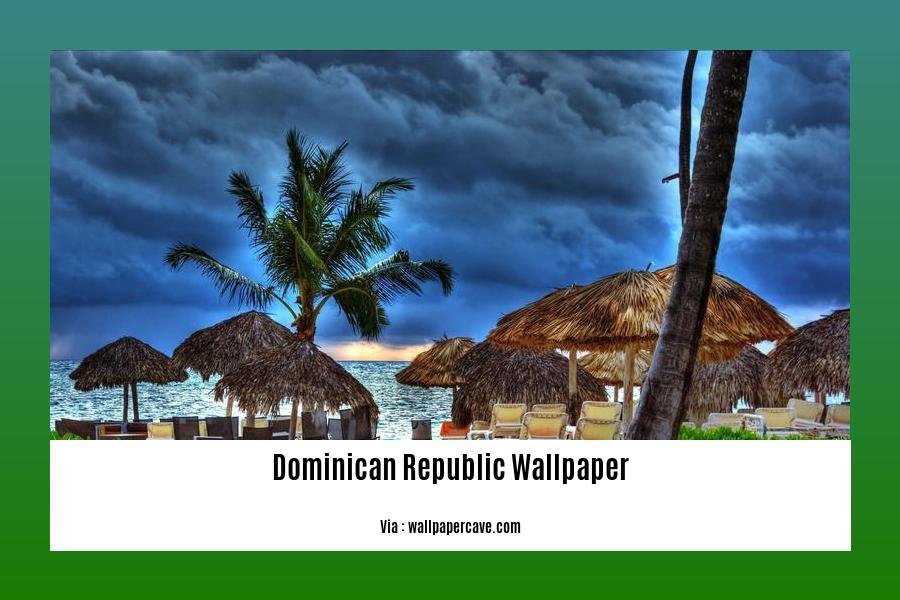
Key Takeaways:
- Pico Duarte is the highest peak in the Caribbean.
- It proudly sits at an impressive elevation of 10,164 feet above sea level.
- The mountain forms part of the Cordillera Central, which runs like a majestic spine through the Dominican Republic.
- Pico Duarte offers intrepid hikers a challenging yet rewarding adventure, with breathtaking views as their constant companion.
Pico Duarte, the Dominican Republic’s crowning jewel, is not just a mountain; it’s a symbol of resilience, adventure, and natural beauty. Its towering presence invites hikers from around the world to embark on an exhilarating journey through diverse landscapes, from lush forests to alpine meadows.
The trek to Pico Duarte is as challenging as it is rewarding. The route winds through lush vegetation, past cascading waterfalls, and along steep ridges, testing the limits of both body and mind. But every step taken is worth it, as the breathtaking views from the summit make all the effort fade away.
Standing atop Pico Duarte, with the Caribbean Sea stretching out to the horizon, is an experience that stays with you long after you’ve descended. It’s more than just conquering a mountain; it’s about embracing the spirit of adventure, connecting with nature’s raw power, and discovering the indomitable strength within you.
So, lace up your hiking boots, pack your sense of adventure, and prepare to be captivated by the allure of Pico Duarte, the Caribbean’s majestic peak.
Sources:
Pico Duarte – Cordillera Central : Interesting Facts, Information …
Pico Duarte – All You Need to Know BEFORE You Go (with Photos)
The Dominican Republic: A Biodiversity Hotspot and Home to the Endangered Hispaniolan Parrot
In the heart of the Caribbean lies a land brimming with biodiversity and natural wonders. The Dominican Republic stands as a refuge for a vast array of unique and endemic species, including the critically endangered Hispaniolan parrot. Join us as we uncover the remarkable biodiversity of this captivating island nation.
Key Takeaways:
- The Dominican Republic is a biodiversity hotspot, home to an extensive variety of ecosystems and species.
- Its diverse landscapes encompass conifer, broad-leaved, dry and swamp forests, secondary shrublands, wetlands, high-elevation savannah, and sparsely vegetated areas.
- The country boasts approximately 5,600 plant species and 300 bird species, attracting nature enthusiasts and birdwatchers worldwide.
- The Hispaniolan parrot, a vibrant and critically endangered species, is endemic to the Dominican Republic and Haiti.
- Conservation efforts are underway to protect marine ecosystems, restore green infrastructure, and ensure clean fresh water for the benefit of both nature and people.
This Caribbean gem is a treasure trove of biodiversity, with an array of habitats supporting a wide range of flora and fauna. From its lush forests and towering mountains to its crystal-clear waters and pristine beaches, the Dominican Republic offers a breathtaking natural tapestry.
Among the country’s most iconic species is the Hispaniolan parrot, a vibrant and endangered bird found nowhere else on Earth. With its striking plumage and distinctive calls, this parrot captivates the hearts of all who encounter it. Sadly, due to habitat loss and the illegal pet trade, the Hispaniolan parrot faces the threat of extinction.
To protect this remarkable species, conservationists are working tirelessly to preserve its remaining habitats and raise awareness about its plight. Through reforestation efforts, nest box installations, and community outreach programs, they aim to ensure the survival of this magnificent bird for generations to come.
As visitors to the Dominican Republic, we have a responsibility to respect and protect its fragile ecosystems. By choosing sustainable tourism practices, supporting local conservation initiatives, and educating ourselves about the country’s biodiversity, we can play a vital role in preserving this natural paradise for years to come.
Citations:
[Biodiversity of Dominican Republic:
[Wildlife in Dominican Republic:
The Dominican Republic has a rich cultural heritage, influenced by Taino, African, and European elements, reflected in its music, cuisine, and traditions.
The Dominican Republic, a harmonious blend of diverse cultural influences, offers a captivating journey through history, traditions, and vibrant expressions.
A Tapestry of Taino, African, and European Heritage:
The Dominican Republic’s cultural heritage is a testament to the fusion of three distinct influences:
Taino Roots: The indigenous Taino people, the original inhabitants of the island, left an enduring legacy in the country’s language, traditions, and art.
African Rhythms: The arrival of African slaves brought a vibrant tapestry of rhythms, dances, and religious practices that deeply influenced Dominican culture.
European Elegance: Spanish colonization introduced European customs, architecture, and language, shaping the country’s identity.
Culinary Delights:
Dominican cuisine is a delectable blend of flavors, reflecting its diverse cultural influences:
Sancocho: A hearty stew, a national dish, is a fusion of Spanish, Taino, and African ingredients.
Mangu: Boiled and mashed green plantains, often served with fried eggs, onions, and salami.
La Bandera Dominicana: A patriotic dish of rice, beans, and stewed meat, representing the Dominican flag’s colors.
Music and Dance:
The Dominican Republic’s music and dance scene pulsates with infectious rhythms and captivating movements:
Merengue: A lively and upbeat genre, known as the national dance, with African roots and European influences.
Bachata: A sensual and romantic style of music, originating in the rural areas, with a mix of bolero and son.
Vibrant Traditions:
Dominican traditions showcase the country’s rich cultural heritage:
Carnival: An annual celebration filled with music, parades, and colorful costumes, a blend of Spanish and African traditions.
Semana Santa: Holy Week commemorations, featuring religious processions, traditional foods, and cultural performances.
Feria Ganadera: A national livestock fair, showcasing Dominican agriculture, livestock, and cultural expressions.
Key Takeaways:
- Cultural Fusion: The Dominican Republic’s heritage is a harmonious blend of Taino, African, and European influences.
- Culinary Diversity: Dominican cuisine is a delectable fusion of flavors, influenced by its diverse cultural roots.
- Music and Dance: The country’s music and dance scene is vibrant and diverse, with infectious rhythms and captivating movements.
- Traditions and Celebrations: Dominican traditions showcase the country’s rich cultural heritage and deep-rooted customs.
Sources:
Culture of the Dominican Republic
Overview of the Dominican Republic
FAQ
Q: What is the highest peak in the Caribbean, and where is it located?
A: Pico Duarte, the highest peak in the Caribbean, is located in the Dominican Republic and stands at an elevation of 10,164 feet (3,098 meters).Q: What is the Dominican Republic’s national capital, and what is its local term?
A: The Dominican Republic’s national capital is Santo Domingo, located on the southern coast. The local term for the Dominican Republic is “Republica Dominica,” meaning “Sunday.”Q: What is the Dominican Republic’s official language, and what is the most popular sport?
A: The Dominican Republic’s official language is Spanish. Baseball is the most popular sport in the country, and many notable baseball players, including Sammy Sosa and David Ortiz, hail from the Dominican Republic.Q: What is the Dominican Republic’s most visited natural attraction, and what makes it so popular?
A: El Limón Waterfall is the Dominican Republic’s most visited natural attraction. It is known for its stunning beauty and refreshing waters.Q: What is the Dominican Republic’s unique cultural blend, and what are some prominent influences?
A: The Dominican Republic’s culture is a blend of European, native Taíno, and African influences. The country’s architecture, cuisine, and religious practices reflect this diverse heritage.
- Georgia Platform: A Southern Strategy, 1850s - March 31, 2025
- How many weeks is 40 days: Quick Conversion Guide for Accurate Results - March 31, 2025
- How many feet is 300 meters? 984 Feet: Understand Length Conversions Easily - March 31, 2025
